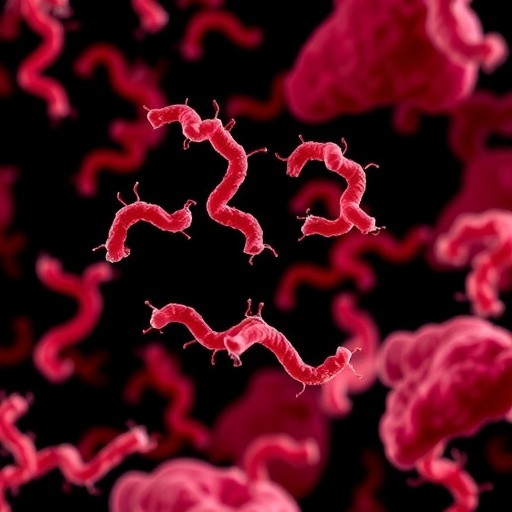Revolutionizing Our Understanding of Helicobacter pylori: A Deep Dive into Antibiotic Resistance and Cag PAI Variability in Malaysian Strains
In the ever-evolving landscape of microbiological research, the implications of bacterial resistance to antibiotics continue to pose significant challenges in treating infectious diseases. One pathogen that has garnered considerable attention is Helicobacter pylori, a Gram-negative bacterium strongly associated with peptic ulcers and gastric cancer. A recent study by Razak et al. provides nuanced insights into antibiotic resistance and the variability of the pathogenicity island gene, specifically the cytotoxin-associated gene pathogenicity island (cagPAI), in strains of H. pylori isolated from Malaysian patients. This groundbreaking research could change our approach toward simplifying diagnostics and enhancing therapeutic strategies.
Antibiotic resistance has emerged as a critical public health issue globally. It not only complicates treatment protocols but also increases morbidity and mortality rates among patients suffering from bacterial infections. The study observed the resistance patterns in various strains of H. pylori isolated from a diverse demographic of Malaysian patients, revealing multifaceted levels of resistance. Through a meticulous analysis of the collected clinical data, the research delineated the frequency of resistance against commonly prescribed antibiotics, such as amoxicillin, metronidazole, and clarithromycin. This multifactorial approach elucidates the pressing need for localized research and the understanding of regional variations in antibiotic resistance.
What sets this study apart from previous research is its focus on cagPAI variability. The cagPAI is integral not only for the virulence of H. pylori but also for the bacterium’s ability to manipulate host cellular processes. By analyzing the genetic makeup of the cagPAI among various strains, the researchers uncovered a spectrum of variations that could influence pathogenicity and resistance mechanisms. The findings indicate that there might be specific mutations leading to variations in the expression of genes within the cagPAI, thereby altering the bacterium’s virulence and its interaction with the host.
In the clinical realm, the practical applications of this research are promising. By understanding the genetic factors contributing to antibiotic resistance and pathogenicity in H. pylori, healthcare providers can develop more targeted treatment protocols tailored to specific strains of the bacterium. This would not only enhance treatment efficacy but could also mitigate the onset of further resistance through more judicious use of antibiotics. Ongoing studies that delve into the genetic determinants of resistance can offer invaluable insights that can be incorporated into personalized medicine approaches.
Moreover, the cultural and socioeconomic context of the Malaysian population sampled in this study plays a crucial role in the interpretation of results. Differences in dietary habits, healthcare access, and antibiotic usage practices among various ethnic groups can significantly influence bacterial resistance patterns. Cultural diversity among patients can lead to multi-strain infections, further complicating treatment regimens. Understanding these factors is essential for developing effective public health strategies aimed at mitigating the impact of H. pylori infections in the region.
What truly stands out in this research endeavor is the employment of advanced molecular techniques to ascertain the genotypic variability among H. pylori strains. Utilizing sequencing technologies allows for a comprehensive understanding of genetic inheritance and mutations within the bacterium. This methodological advancement not only bolsters the robustness of the findings but also opens avenues for future research focused on genetic epidemiology and evolutionary biology of H. pylori in various populations.
Furthermore, the implications of this research extend beyond Malaysian borders. The global nature of antibiotic resistance necessitates parallel studies across different geographies to better understand the dynamics of H. pylori evolution. Countries with similar ecological and sociocultural contexts should reflect on these findings to adapt their approaches to H. pylori management. Collaborative international studies can help construct a global map of resistance patterns and inform future guidelines for treatment.
The narrative of infectious diseases is ever-complex, and the story of H. pylori is no exception. Not only does it underscore the importance of understanding antibiotic resistance, but it also points to the broader implications of microbial virulence factors on human health. Perhaps the most alarming possibility raised by Razak et al. is the risk of H. pylori evolving in tandem with antibiotic stewardship practices. If strains resistant to first-line treatments proliferate, it could lead to an era where even the most basic infections become difficult to manage.
The researchers are hopeful that their work may serve as a catalyst for further investigations into the intersection of antibiotic resistance and microbial pathogenicity. By employing comprehensive genomic analyses and advanced bioinformatics tools, next-generation studies can iterate on these findings, establishing causative links and revealing potential therapeutic targets hidden within the genomic sequences of H. pylori.
In summarizing this significant contribution to microbiology, one cannot overlook the vital role that constant surveillance of antibiotic resistance plays in public health. As the prevalence of resistant strains continues to rise, efforts to employ molecular techniques for monitoring and analyzing bacterial populations will become increasingly indispensable. The research conducted by Razak et al. is a salient reminder of the diligence and innovation required to stay ahead in the ever-competitive fight against pathogens.
By bringing together strands of microbiology, clinical medicine, and public health, this study stands as a beacon of hope in the ongoing battle against antibiotic resistance. It speaks to the necessity of collective efforts within the scientific community to push towards enhanced understanding and improved patient outcomes. Moving forward, the insights gleaned from this research can serve as principles to form and refine strategies that will help safeguard public health both in Malaysia and beyond.
Subject of Research: Analysis of antibiotic resistance and cagPAI variability in Helicobacter pylori strains from Malaysian patients.
Article Title: Analysis of antibiotic resistance and cagPAI variability in Helicobacter pylori strains from Malaysian patients.
Article References: Razak, S.A., Hanafiah, A., Sukri, A. et al. Analysis of antibiotic resistance and cagPAI variability in Helicobacter pylori strains from Malaysian patients. Int Microbiol (2025). https://doi.org/10.1007/s10123-025-00741-9
Image Credits: AI Generated
DOI: https://doi.org/10.1007/s10123-025-00741-9
Keywords: Helicobacter pylori, antibiotic resistance, cagPAI variability, Malaysia, public health, microbial pathogenicity.




